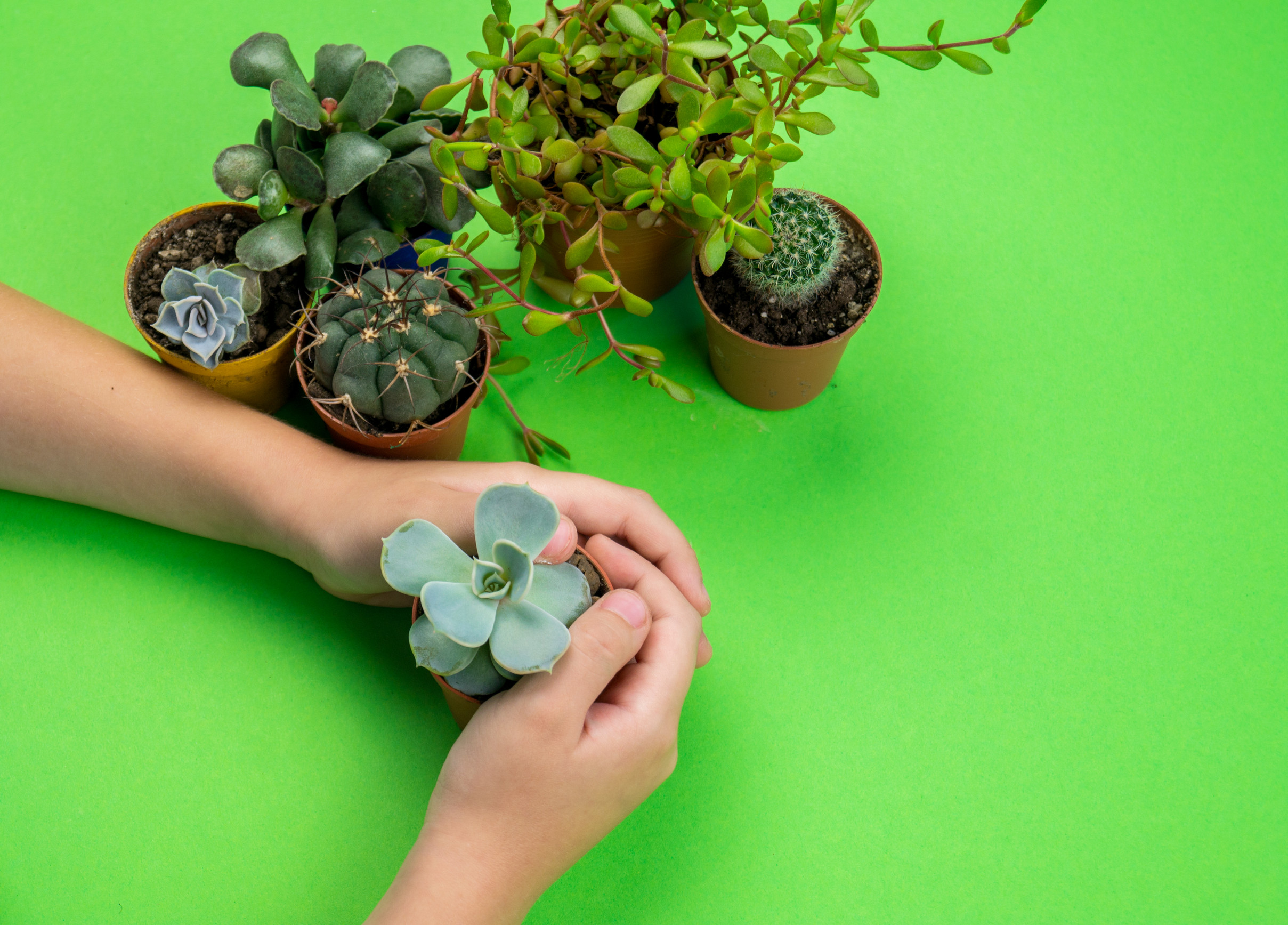Succulents are popular for their distinctive appearance and low-maintenance requirements. However, like any plant, they might experience a range of problems. In this post, we’ll look at frequent problems that succulent owners confront and their causes and treatments for reviving your green buddies.
Common Succulent Problems and How to Fix Them
Yellowing Leaves: Causes and Solutions
Various factors can cause yellowing leaves, the most common of which are overwatering or nutrient deficiencies. When succulents absorb excessive water, their roots may struggle to absorb nutrients, resulting in discoloration.
How Do I Fix It?
- Assess Watering Practices: Allow soil to dry completely between waterings.
- Try using a balanced fertilizer instead of overwatering to give critical nutrients during the growing season.
Overwatering: Recognise the Signs
Overwatering is one of the most prevalent difficulties encountered by succulent owners. Yellowing leaves, a mushy texture, and a foul scent in the soil are all signs.
How Do I Fix It?
- Report immediately by relocating the plant to fresh, dry soil and removing decaying roots.
- Water sparingly, only once the soil is totally dry.
Underwatering: How to Spot and Fix It?
Underwater succulents frequently shrivel or seem dry and wrinkled. If your succulent feels mushy and lifeless, it may require additional hydration.
How To Fix It?
- Water deeply, allowing excess water to drain from the pot’s bottom.
- Make a schedule to check soil moisture weekly.
Drooping or Mushy Leaves: Identifying Rot
Drooping or mushy leaves on succulents, particularly around the base, are generally signs of root rot. This can be caused by prolonged contact with damp soil.
How Do I Fix It?
- Cut away damaged foliage to prevent spread.
- Repot the plant in a drier, well-drained medium to improve root health.
Brown or Black Spots: Understanding Fungal Issues
Brown or black stains may suggest fungal infections, frequently caused by excessive moisture and inadequate air circulation.
How Do I Fix It?
- Improve Circulation: Position your succulents for better airflow.
- If the problem persists, consider using a moderate fungicide to control the growth.
Etiolation: addressing stretching in light
Etiolation happens when a succulent becomes tall and leggy, usually because of insufficient light—the plant strains towards the light source, which causes extended stems and uneven development.
How Do I Fix It?
- Consider moving the plant closer to a window or investing in grow lights to increase light exposure.
- Trimming can promote better growth patterns.
Pests: Controlling Mealybugs and Scale Insects
Mealybugs and scale insects can deplete the vitality of your succulents, resulting in poor development. Inspect for sticky residue or apparent pests.
How Do I Fix It?
- Apply insecticidal soap directly to affected areas, then rinse thoroughly.
- Isolate and monitor affected plants until insect issues are remedied.
Nutrient Deficiency: Signs of Stunted Growth
Nutrient deficiencies, such as stunted growth and discoloration, are usually caused by a lack of critical minerals.
How Do I Fix It?
- Fertilize with a balanced, diluted fertilizer during the growing season.
- For optimal nutrition availability, choose a soil with high organic content.
Soil Quality: Selecting the Right Medium
The appropriate soil is essential for healthy succulents. Poor drainage can cause root rot and sickly plants.
How Do I Fix It?
- Choose Well-Draining Soil: Look for cactus or succulent mixes, or make your own with potting soil, sand, and perlite.
- Avoid heavy soils that retain moisture, as they might drown succulent roots.
Lighting Conditions: Optimising Sunlight for Succulents.
Insufficient or excessive sunshine can cause various problems, including etiolation and sunburn.
How Do I Fix It?
- Succulents should receive bright, indirect light for a few hours per day.
- Move to a brighter environment gradually to avoid shock.
Temperature Extremes: Keeping Ideal Conditions
Succulents grow in temperatures ranging from 60°F to 80°F (15°C to 27°C) and can withstand extremes.
How Do I Fix It?
- Avoid placing succulents near drafts, heating vents, or air conditioners to control the indoor climate.
- During colder months, move plants indoors or use protective coverings if outdoors.
Care for Your Succulents
Understanding the symptoms of common succulent diseases and how to treat them is critical to keeping your plants healthy and growing. You may grow a flourishing succulent collection by paying strict attention to hydration, lighting, and insect control.
Remember that each plant is unique and may necessitate various care approaches, so observe and adjust as needed. Happy gardening!
FAQs
How can you repair damaged succulents?
Repairing a damaged succulent is based on the sort of damage:
To care for overwatered succulents, gently take the plant from its pot, trim any discolored or mushy roots, and repot in dry, well-drained soil. Avoid watering for a few weeks to allow the roots to heal.
To assist shriveled succulent leaves in recovery, immerse the plant in water and set it in a light position. Following that, make sure you set up a correct watering routine.
Remove damaged leaves carefully to minimize disease transmission. You can also propagate healthy leaves to promote fresh growth.
How can you aid a suffering succulent?
To revitalize an ailing succulent, follow these steps:
- Adjust the watering routine based on the plant’s current condition. If the soil is excessively dry or damp, adjust accordingly.
- Location: Make sure your plant gets enough sunshine. If it isn’t growing, move it to an area with bright, indirect lighting.
- To avoid root rot, use a succulent-specific soil mix that drains effectively.
- Fertilise sparingly: If your succulent appears poor, apply a diluted succulent fertilizer to provide an extra nutrient boost, but avoid overdoing it, as this can be damaging.
